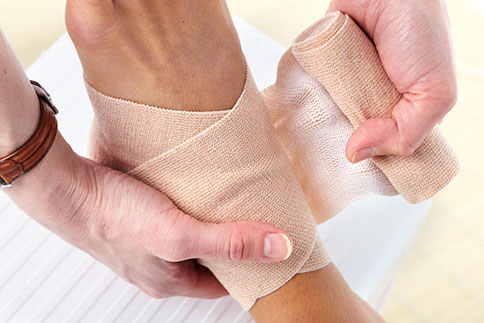Ask your vein doctor about hard-to-heal venous leg ulcers
Posted: Thursday, August 7, 2014 | Revised: October 3, 2014
Ask your vein doctor about hard-to-heal venous leg ulcers
People with varicose veins have a lot of symptoms and side effects to deal with: Pain, cramps, aching, feelings of fatigue and heaviness – not to mention the unattractive appearance of the veins themselves.
But there’s another side effect of varicose veins that can occur, especially when the condition is allowed to persist without adequate treatment from a vein doctor, and it’s one that can have serious consequences: Leg ulcers.
Ask your vein doctor about hard-to-heal venous leg ulcers
Leg ulcers are sores that begin on the surface of the skin and which can develop into much deeper lesions, sometimes reaching the bone. They’re typically divided into two primary categories – arterial and venous. While the circulation-related causes of arterial ulcers are more straightforward, venous ulcer development is more complex. Here’s a brief overview:
Arterial vs. venous
Arterial ulcers develop in men and women with peripheral artery disease (PAD) and are a direct result of inadequate primary circulation to the tissues of the legs. Patients with venous leg ulcers, on the other hand, typically have uncompromised primary circulation, but experience localized circulatory issues that are restricted to the area where the ulcers form.
Venous ulcers: Underlying mechanisms
Venous ulcers usually occur in men and women who have high pressure in their veins which impairs the body’s ability to return blood to the heart. As a result, blood flow “backs up” and swelling occurs. The swelling in turn presses against local veins, resulting in localized compromise of circulation.
Diminished circulation in these local areas means the skin does not receive the amount of oxygen and nutrients it needs to stay healthy. Skin becomes fragile, and even the slightest bump or bruise can cause it to break down. The result: Venous lesions. In some patients where the circulation has been severely compromised, this tissue break down can occur spontaneously, resulting in bruising and swelling just beneath the skin.
Treatment of venous ulcers
Like arterial lesions, venous lesions are usually slow to heal. That’s because the skin’s repair system has also been compromised by poor circulation. To treat these ulcers and prevent new ones from forming, your vein doctor will need to treat the underlying circulation problems. In most cases, that means you’ll need to undergo a relatively simple procedure to remove underlying varicose veins so circulation to the area is restored. The wound itself will also need special care, including dressings and possibly a course of antibiotics to prevent infection. Your doctor may also prescribe compression hose that can help balance the pressures in your leg veins.
No matter what type of leg ulcers you have – arterial or venous – healing relies on the intervention of a skilled and certified Michigan vein doctor. If you have leg wounds that won’t heal or unexplained bruising in your legs and feet, don’t delay: Call our vein clinic today and schedule an appointment so you can be evaluated.
